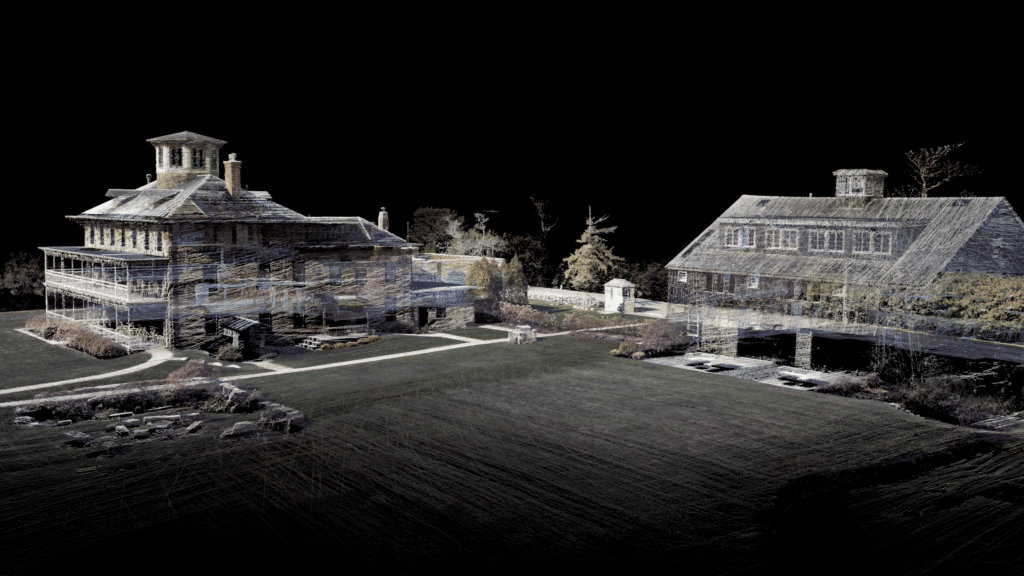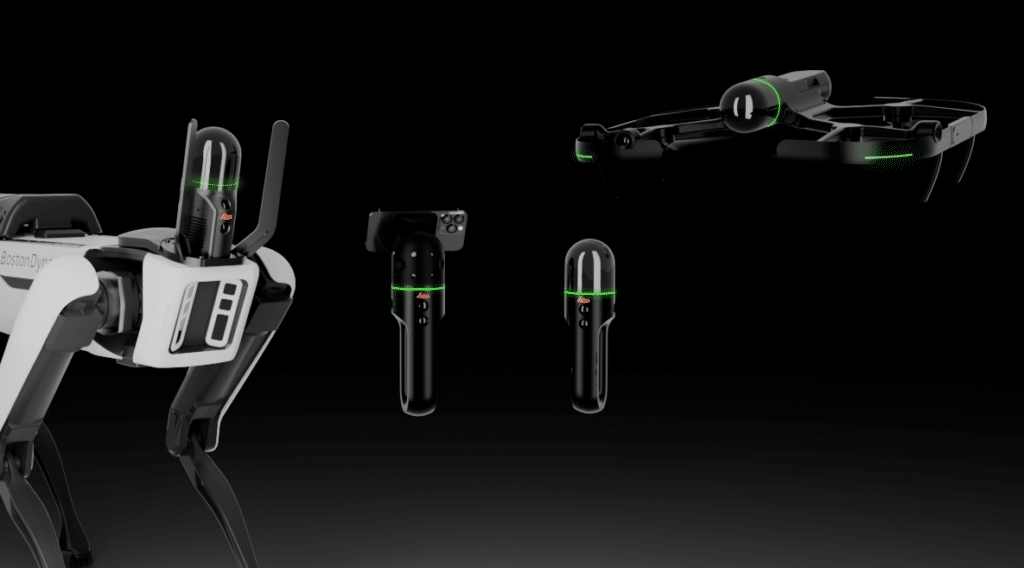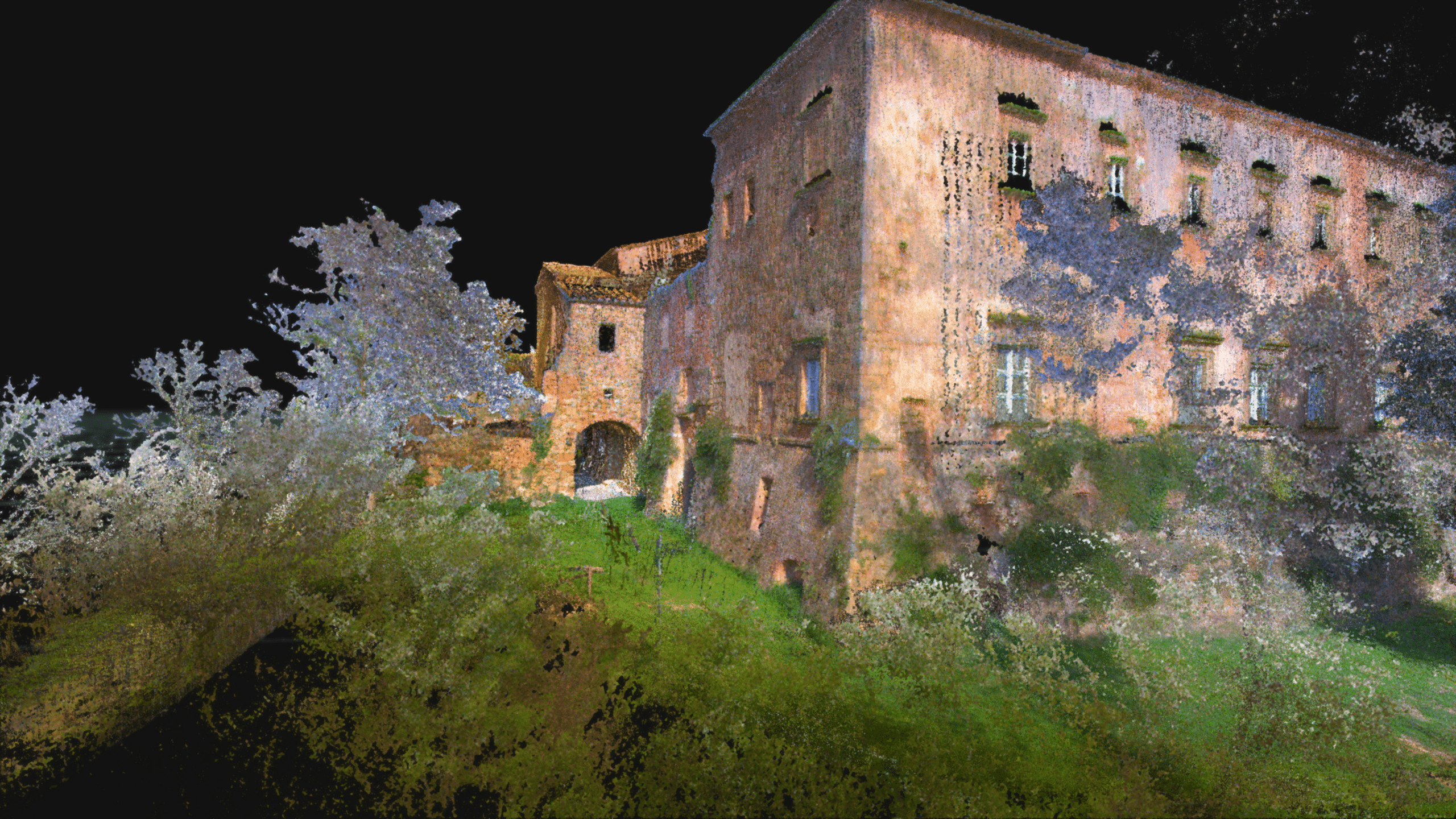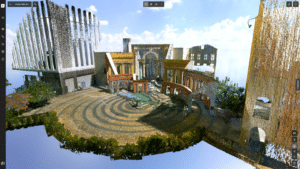What is a Digital Twin and how are they used in Reality Cloud Studio, powered by HxDR?
A digital twin is, at its most simplistic, a digital replica of a real-world object or environment. More specifically, it’s a precise digital representation of the physical world that can be leveraged to simulate, analyse, monitor and optimise performance. Fed with dynamic data, the results of the simulations, analysis or monitoring can even reach one more step in accuracy.
The difference between a digital twin and a hand- or computer-drawn model is its accuracy to the real thing. When you scan a building or object with a LiDAR scanner and generate a point cloud from it, this millimeter accurate point cloud becomes the basis of a digital twin in the form of a mesh or model. Created with the rich data generated from these point clouds, these digital twins can be shared and edited into various workflows and are shaping next-gen surveying, construction, and architecture practices – and beyond.

Reality capture sets the tone
At Hexagon, we focus on the connection between the real world and the digital twin. Reality capture — usually performed with a LiDAR scanner — is a process that creates or updates the digital twin by regularly or constantly comparing it with its physical counterpart.”. By regularly updating the digital double, we can spot differences and find ways to improve processes and efficiencies. It also enables risk-free experimentation in a secure digital space. This is the key to practices such as Building Information Modeling and as-built construction, but also media and entertainment — any place where knowing the difference between where something is, where something was, and where something is supposed to be (e.g. an architectural design or construction plan) is essential.
To create a digital twin, we first must digitize the real world with camera-equipped laser scanners. You can do this while you’re standing (with a Leica BLK360 or Leica RTC360), walking (with a Leica BLK2GO or Leica BLK ARC), driving (with a Leica Pegasus TRK), or even flying (with a Leica BLK2FLY). When that’s done, the raw data is processed, managed, and then delivered in the model needed.
To make the whole thing easier, we use automated workflows every step of the way. For instance, with Reality Cloud Studio, you can upload your data from the scanner or software, mesh it in the cloud into a digital twin, and then export it in a variety of file types as well as share it in the cloud with your collaborators. It’s an incredibly powerful way to bring digital twins to life.
Digital twins aren’t locked away in a box for big companies either. Visual effects supervisors, small scale manufacturers, and even archaeologists can tap into them. Hexagon provides various digital twin solutions for different industries, built to lower adoption barriers and maximize returns. Thanks to 3D geospatial data sensors becoming more affordable, these detailed digital twins put the power of informed decision-making in the hands of individuals and businesses, especially with options like Reality Cloud Studio.

Empowering Industries with Digital Twins
From surveying landscapes to constructing skyscrapers, managing oil and gas plant, or designing a residential building in an architecture firm, digital twins deliver game-changing benefits. They offer a no-hazard ground to test scenarios, preventing costly errors. This updated ‘twin’ of the real thing guides us to make better-informed decisions, enhancing efficiency while driving down costs and risks.
Digital twins in construction can also help simulate and visualize the project, aiding in clash detection and eliminating construction hiccups. Got a new structure planned in the heart of the city? The digital twin saves you from any surprises by accurately reflecting how this new structure would interact with the existing cityscape.
Finally, digital twins can also be connected to real-world processes for real-time monitoring. This is what LocLab Cloud is doing with their digital twins, creating beautifully detailed models that are connected to live data and can be used to monitor spaces and functions from the comfort of your desktop or tablet.

Smart cities and more
But digital twins are not just about buildings and landscapes. They also let us look into the future and play out different scenarios. Enough of them together scale up to create smart cities, acting as a living model that replicates the city’s functioning in real time. It provides insights about traffic flow and energy consumption and helps devise strategies to make urban areas more sustainable and livable.
The application of digital twins is broad, ranging from clearance analysis for traffic models, planning high-rise building constructions, and mapping downtown noise to better event planning. All these simulations help us make more informed decisions, reduce risks, and increase businesses’ return on investment.

The future is full of digital twins
The final evolution of the twin process, Smart Digital Reality, autonomously extracts the value of information from the digital twin to fuel continuous improvement. Plus, as the integration of 3D data and AI continues to evolve, we’re excited to see where digital twin technology will take us next. The digital duplication of reality is becoming increasingly important in our modern world, allowing us to push the boundaries of what’s possible. Here’s to a future where digital twins help us make our lives better by making smarter decisions informed by digital reality.





